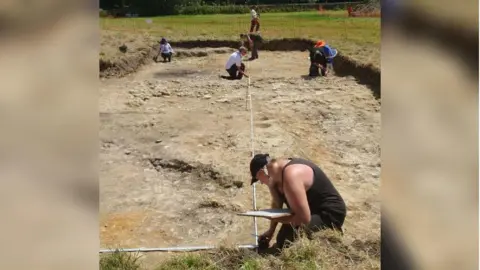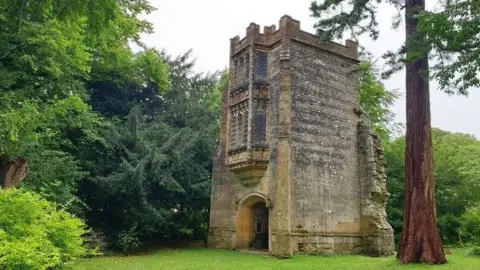Archaeologists to conclude medieval abbey dig
 cerne_abbey
cerne_abbeyArchaeologists are set to conclude a four-week long dig at the site of a Benedictine abbey.
Cerne Abbey in Dorset was demolished in 1539 during the Dissolution and, until excavations last year, had remained virtually untouched.
Researchers from the University of Sheffield discovered tiled floors and an intact burial in last year's dig, and excavation director Dr Hugh Willmott said this year's work had produced some "really exciting results".
The dig will conclude on Saturday.
Dr Willmott said Cerne Abbey would have been about the size of Sherborne Abbey before it was "completely destroyed and wiped off the map".
But he said, despite its size, "very little" is known about it.
"It's not one of those famous ones that you might go and visit," he said.
"Even people who live here and have lived here all their lives, beyond knowing that there was once an abbey, there wasn't much else they could say about it."

The purpose of the dig was to discover the position and layout of the buildings, as well as look for evidence of a Anglo-Saxon predecessor to the abbey.
Dr Willmott said the dig had been challenging at times.
"It's certainly been hot... which makes it really, really hard going because we've got a lot of rubble," he said.
But he said the team, which included people from all over the world as well as from Dorset, had "done really well".
He said they had some "really exciting results" but understanding them was "complex".
"You don't just dig stuff up and know everything," he said.
"It takes a while as you're excavating to appreciate what the features are [that] you're seeing, and then of course there's all the artefacts that we find which need analysing... come the new year, we'll have a better idea of what the actual final results are."
"It's a really great site to be working on so I'm sure we'll be back next summer," he added.
Follow BBC South on Facebook, X (Twitter), or Instagram. Send your story ideas to [email protected] or via WhatsApp on 0808 100 2240.
